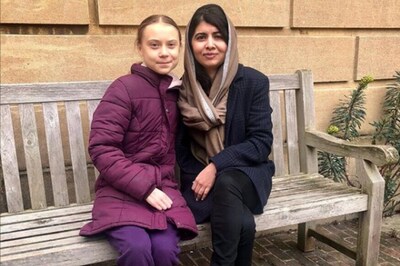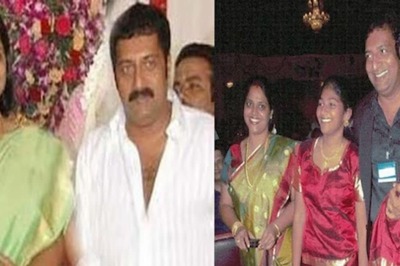
views
Eight years in power is a long time for the public mood to change. Manmohan Singh realised it when consecutive corruption scams started to hit his government with full force around 2012 and the United Progressive Alliance (UPA)’s twin victories over the preceding eight years seemed just a distant memory then.
Narendra Modi, the politician, however, seems to be defying such odds. Completing eight years as Prime Minister, Modi remains on a firm footing and in a pole position ahead of the general elections in 2024 and the larger public mood is in his party’s favour as indicated by election victories in key states like Uttar Pradesh and Bihar.
Challenges like the inflation issue, the Covid pandemic, the continuing stand-off at the Line of Actual Control (LAC) with China and the changing geopolitical scenario post the Russia-Ukraine war also seem to be getting moulded in public opinion that only a strong leader like Modi can deftly navigate or resolve such issues. The Bharatiya Janata Party (BJP) has aced the trick of a hypothetical juxtaposition of Rahul Gandhi in such a leadership position to prove this.
Speak to senior BJP leaders and they concede that a Gandhi-led Congress is a big ace up the ruling party’s sleeve — a political game whose rules to win are now known to them even in their sleep. While Sonia Gandhi as the Congress leader could retire BJP stalwarts, like Atal Bihari Vajpayee as the Prime Minister in 2004 and defeat the ambition of LK Advani in 2009, she or her children have failed to counter Modi.
This, the BJP under Modi believes, is due to the polity of the country changing since 2014 and the dynastic culture of politics being rejected at the national level. The rise of nationalistic fervour, appeal to a wider Hindutva base of voters over the challenging issue of caste-based politics and the nurturing of the poor rural voters as the new “beneficiary constituency” by Modi is the winning formula.
The opposition not only lacks a strong face but more importantly it lacks a narrative. Efforts of forming a larger opposition front have come a cropper since 2014 amidst ambitions of a range of regional leaders to take the mantle instead of a Gandhi-led Congress that keeps losing polls. To them, Rahul Gandhi as the opposition’s PM face seems like a sure-shot recipe to keep Modi in the chair.
How Modi wins
There are two clear readings of the 2014 and 2019 general election wins of Narendra Modi. While in 2014, it was the anti-incumbency against the 10 years of UPA rule, the corruption scams and the Anna movement over Lokpal that turned the public imagination away from the Congress-led alliance, Modi’s nationalistic personality and his presidential-style campaign on the plank of nationalism and anti-dynasty politics caught the public’s eye. The twin dose of Hindutva pitch and promise of development rallied support in his favour that led to the BJP winning 282 seats on its own and sweeping Uttar Pradesh with 73 out of the 80 seats there.
The 2019 win was even bigger and not without reason. During his five years in power, Modi created a new category of voters — the “beneficiary class”, which mainly comprised the poor in the villages who got one or the other benefit from the government either in the form of a gas cylinder, toilet, bank account or a house, that too without any cuts or leakages. The main supporters of Modi in fact were women. This class seems to have risen over traditional factors like caste to vote for Narendra Modi as the PM in 2019.
The bigger win was aided by the nationalism fervour hitting its peak with the Balakot strike in Pakistan in February 2019 after the Pulwama attack, just two months ahead of elections. Rahul Gandhi’s Rafale “scam” plank fell flat and the opposition had no new narrative. The BJP won with an even bigger number of 303 seats, rubbishing much political wisdom in India and abroad that it will be a narrower victory.
Mixed three years of Modi 2.0
The second term of Modi began with big-bang moves like scrapping Article 370 sections in Jammu and Kashmir and splitting the state into two Union Territories. Holding peaceful elections in J&K in the coming months is a big challenge for the Centre. The Ram Mandir judgement from the Supreme Court came as a further shot in the arm for the Modi government with a temple now coming up at a rapid pace in Ayodhya — a factor which is said to have played a role in the big win in the 2022 Uttar Pradesh elections.
However, other big moves like bringing the three farm laws to reform agriculture and enacting the Citizenship Amendment Act (CAA) haven’t panned out as expected. The Modi government had to scrap the three farm laws after a spirited year-long protest by farmers from mainly Punjab and Haryana on the borders of Delhi. The CAA is still to be implemented despite being enacted in Parliament after the Shaheen Bagh protest captured global attention.
The handling of the Covid pandemic by Modi-led India, the early manufacturing of two indigenous vaccines and the total vaccination mark reaching nearly 200 crores in the country by next month are, however, well-cited achievements on the global stage by India. The message that the BJP has managed to percolate to the ground is that it is only under the “decisive leadership” of Modi that the country was saved from distress and economic ruin.
The rising pitch of the Hindutva voice, as depicted in legal battles like Gyanvapi in the PM’s constituency of Varanasi or alleged excesses against minorities, is only expected to bolster Modi’s political chances ahead of 2024, though the criticism on global platforms is getting shriller. The lack of an official diplomatic reaction from leading nations to such events only reinforces the BJP’s view that India is now a strong nation under Modi that no country wants to offend. A loose opposition in India is unable to counter it.
Read all the Latest India News here


















Comments
0 comment